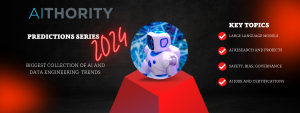WiMi Announced Big Data Intelligent Decision-making System Based on ML and Situational Awareness
WiMi Hologram Cloud a leading global Hologram Augmented Reality (“AR”) Technology provider announced that the big data intelligent decision-making system based on machine learning and situational awareness is of great significance and value in solving complex decision-making problems in real life, which can improve decision-making efficiency, optimize resource allocation, enhance the accuracy of risk prediction, and promote innovation and development.

Recommended AI News: Capital One Enters Enterprise B2B Software Market with Launch of Capital One Software Business
Machine learning and situational awareness are areas that have developed rapidly in recent years, enabling them to learn from data, recognize it, and respond accordingly to the current context. The development of these technologies supports intelligent decision-making systems for big data.
In WiMi’s big data intelligent decision-making system based on machine learning and situational awareness, data acquisition and pre-processing is a very important step, which involves collecting data from various data sources and cleansing and transforming them so that the subsequent analysis and decision-making process can yield accurate and reliable results.
The design and training of machine learning models is also a crucial step. With reasonable model design and sufficient training data, we can construct efficient and accurate machine-learning models to provide accurate decision support for the system.
In the big data intelligent decision-making system based on machine learning and situational awareness, the design and implementation of the situational awareness algorithm plays a crucial role. The algorithm is able to acquire and understand the current environment and situation in real time by analyzing and mining big data, so as to provide accurate background information and predictive results for decision-making. The design and implementation of the situational awareness algorithm is a complex process, which requires comprehensive consideration and optimization of multiple aspects such as data collection, feature extraction, model training, real-time monitoring and decision-making, in order to achieve an accurate perception of the current situation and decision support.
Data collection and pre-processing: First the system needs to collect various decision-related data, including sensor data, web data, social media data, etc. These data may come from different sources with different formats and characteristics. Therefore, before proceeding with the algorithm design, these data must be pre-processed and cleaned to ensure the quality and consistency of the data.
Feature extraction and selection: The system needs to extract useful features from the raw data for subsequent machine learning and analysis. The goal of feature extraction is to convert the data into a numerical representation that can be used for model training. Various feature extraction methods can be used in this step, such as statistical features, frequency domain features, and time domain features. Feature selection is also required to reduce the dimensionality and redundancy of the features to improve the efficiency and accuracy of the model.
Recommended AI News: Kemin Industries Launches Cloud-based Data Management Platform KEMINCONNECT
Model training and optimization: After feature extraction and selection are completed, the system needs to use machine learning algorithms to train the data. Common machine learning algorithms include decision trees, support vector machines, neural networks, and so on. By learning and analyzing the historical data, the system can construct a model that can accurately predict and identify the posture. In order to improve the performance and generalization ability of the model, the model can also be optimized using techniques such as cross-validation and parameter tuning.
Real-time monitoring and decision-making: Once the model training is complete, the system can monitor and analyze new data in real-time to achieve the perception of the current situation. By comparing with the preset decision rules and strategies, the system can generate corresponding decision suggestions or warning information to help decision makers make accurate decisions. At the same time, the system can also update and optimize the model based on real-time feedback information to adapt to changing environments and situations.
The system realizes the goal of intelligent decision-making by analyzing and mining a large amount of data. WiMi employs a variety of machine learning algorithms to train models and make predictions on the data. At the same time, situational awareness algorithms are introduced to monitor and analyze real-time data to detect and identify potential risks and opportunities promptly.
In the future, WiMi will further promote the development and application of the big data intelligent decision-making system in terms of the improvement and optimization of deep learning algorithms, the fusion and processing of multi-modal data, the expansion of the application of augmented learning, as well as privacy protection and security enhancement.
Recommended AI News: Videotron Partners With EMnify to Power New Enterprise IoT Connectivity Offering
[To share your insights with us, please write to sghosh@martechseries.com]

Comments are closed.